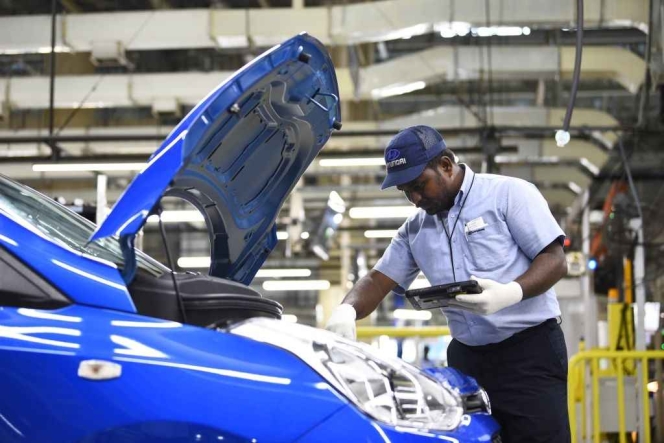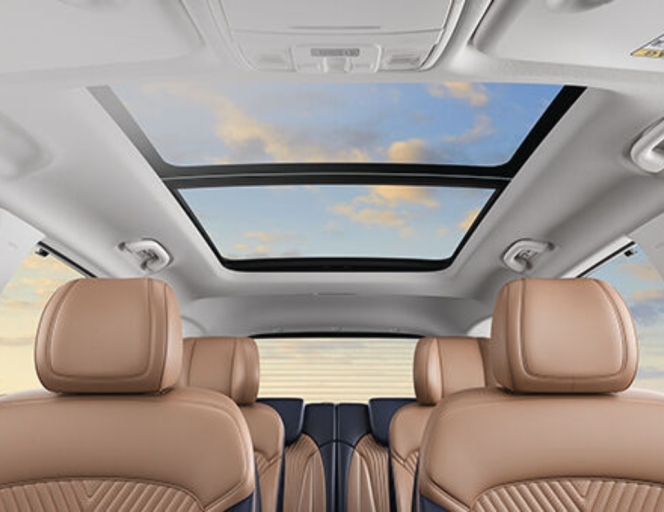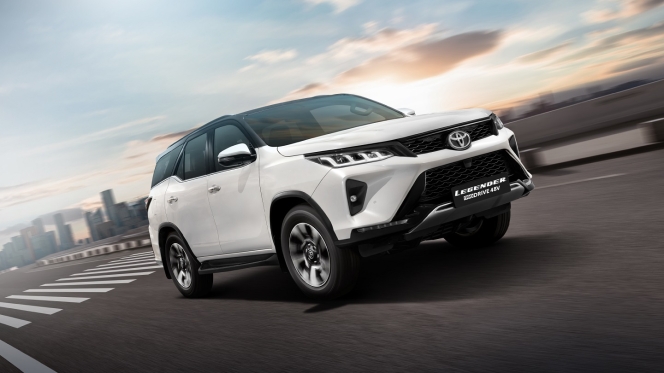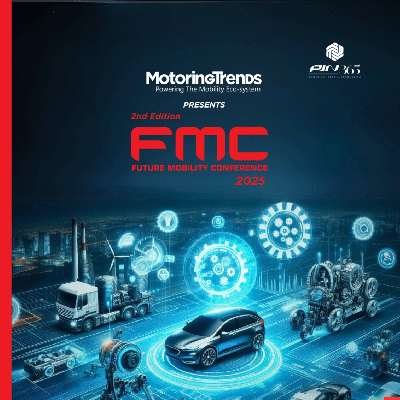

Speaking to this correspondent, Ganesh Mani S, Director – Production, HMIL, said, to have the first-mover advantage in the industry, carmakers are constantly looking for newer technologies and innovations. The Indian auto industry is at the cusp of a new era with updated regulation norms for emission and recall. This brings more relevance to have fool-proof quality testing processes in place. “Towards fulfilling this objective, we at Hyundai Motor India have a Quality Assurance ‘Testing, Inspection, and Certification’ (TIC) process to ensure that every car we make is 100 percent defect-free. The ‘TIC’ process has a two-pronged strategy. First, we test the condition of the respective part before assembling at the vendor’s end and next we test the condition of the assembled vehicle as per the required standards at our end.”
 It may be recalled that both its R&D Centres in Namyang, South Korea and in Hyderabad, India work in tandem to design and develop any new model. They also conduct all the region specific tests before they sign-off the car for manufacturing. “At the production stage, we conduct several standard tests including the wheel alignment, head-light aimer, roll and brake and much more. We test the ride handling capabilities of our cars first at our internal tracks in our Sriperumbudur facility which simulates 17 types of Indian road conditions, and later also conduct a Vehicle Durability Test across India. At the Certification level, we also use government authorised test agency (Global Automotive Research Centre) tracks to conduct standardized tests,” he said.
It may be recalled that both its R&D Centres in Namyang, South Korea and in Hyderabad, India work in tandem to design and develop any new model. They also conduct all the region specific tests before they sign-off the car for manufacturing. “At the production stage, we conduct several standard tests including the wheel alignment, head-light aimer, roll and brake and much more. We test the ride handling capabilities of our cars first at our internal tracks in our Sriperumbudur facility which simulates 17 types of Indian road conditions, and later also conduct a Vehicle Durability Test across India. At the Certification level, we also use government authorised test agency (Global Automotive Research Centre) tracks to conduct standardized tests,” he said.
Talking on the challenges faced in testing vehicles in the assembly line, he said, the digital revolution has created a great impact offering practically unlimited possibilities for a pleasant and safe driving experience. Today the cars are smarter and more connected than ever. This means an exponential increase in the number of tests and its duration at the assembling stage. “To offer best quality cars for our customers, we need to reach the desired quality targets and address defects related issues during assembling while successfully implementing the essential TIC solutions. This will help minimise the human error, if any. Solutions such as limiting the opportunity to insert the product on the wrong fixture (through appropriate mechanical constraints) and partially automating the activation of the correct test program (based on barcode readers) using in-line systems goes a long way. Along with maximum performance, the testing equipment should also be engineered to optimize system ergonomics with respect to operator comfort. This coupled with the precepts of lean production which will allow more flexibility in the mixing of various models. It is also necessary to guarantee high test results throughout to comply with the increasing production cycle-times. So, these testing machines should have the basic data analytics tool with summarized output screen, which could be used as an input for improving the process and design. This idea can also be extended to monitor the performance of the testing machine as well to proactively do the maintenance activities. Going forward, we will work towards minimising human intervention as much as possible and improve the process to do more self-learning and proactively suggest feedback & countermeasures,” he said.
Be it for the domestic or export markets, any OEM has to address three aspects to make cars with top-most quality. Firstly, at the design stage it is necessary to achieve the best performance and quality for the vehicle at optimal cost while keeping other factors in check. Hyundai ensures that all the learnings from previous models are implied in upcoming models. Secondly, during production it ensures that the vehicle meets all the required country-specific test standards and feature options for all its variants. Finally it understands the customer’s pulse and needs.
 “At HMI we transform metal into excellence with hand-crafted engineering and at 100 percent precision. To make the perfect cars we follow a 3-stage systematic tightening confirmation process which captures over 200,000 quality data points related to tightening, every day. We have linked this information with ‘Sign-off Gate’ to prevent the ‘not ok’ car roll out from the final assembly line. Our vehicle final inspection method is digitally enabled for assembled part specification/ type verification; we use a Hyundai Integrated Dialogistic System which is loaded with pre-set information on quality confirmations for 350+ variants. Such high degree of customization helps us to meet the growing customer requirement and enables desired results in the manufacturing process,” he said.
“At HMI we transform metal into excellence with hand-crafted engineering and at 100 percent precision. To make the perfect cars we follow a 3-stage systematic tightening confirmation process which captures over 200,000 quality data points related to tightening, every day. We have linked this information with ‘Sign-off Gate’ to prevent the ‘not ok’ car roll out from the final assembly line. Our vehicle final inspection method is digitally enabled for assembled part specification/ type verification; we use a Hyundai Integrated Dialogistic System which is loaded with pre-set information on quality confirmations for 350+ variants. Such high degree of customization helps us to meet the growing customer requirement and enables desired results in the manufacturing process,” he said.
Beyond BS-VI
The move to make BS-VI compliant vehicles is not just important for cleaner air but it will also enable carmakers and Government agencies to record data on Real Driving Emissions (RDE). After the roll-out of BS-VI complaint vehicles there will be enough captured data available with the concerned authorities and regulators to be able to reduce the gap between type-approval vehicle emissions results and the actual ones on roads. Hyundai has global experience in the area of RDE vehicle development and this is a huge technical advantage to help develop vehicles for the Indian market. “We have done some amount of testing specific to the Indian road conditions. Before the Government’s regulations are set in motion, we too will be prepared to take up this challenge by upgrading our technical and analytical capabilities in all the required areas,” he said.
Nowadays, all cars come loaded with different kinds of infotainment, safety and communication systems. For instance, the recently launched Creta has 50 plus India-specific connected features which is 30 percent more than any other cars manufactured by the company. All these are absolutely important to ensure all these electronic devices work smoothly for the customer to enjoy a great drive. HMI has a multi-layered assurance process designed and developed by its in-house teams with specific performance indicators. ‘Hyundai Automatic Diagnostic System’ is another tool it uses to inspect the proper functioning of over 60 checkpoints in the electrical system and connected car features in all its cars.
Besides, it also has an integrated in-line testing facility installed in the assembly process line to check and approve the performance of all electronic systems fitted in all the cars at the sign-off gate. Also it ensures that the same level of standards are maintained at the vendors end too. This makes the quality assurance process more robust & mistake proof, Ganesh Mani added. (MT)
Hyundai Alcazar Corporate Variant With Panoramic Sunroof Launched At INR 1.78 Million
- By MT Bureau
- June 03, 2025

Hyundai Motor India (HMIL) has expanded its Alcazar SUV range with a new Corporate variant with diesel powertrain at prices starting INR 1.78 million and an expansion of automatic transmission options in the Prestige DCT Petrol (7-speed) at INR 1.86 million.
The Alcazar Corporate variant is equipped with a voice-enabled smart Panoramic Sunroof and is available with both 6-speed Manual and 6-speed Automatic transmission choices, and is designed to appeal to the evolving aspirations of Indian SUV buyers.
Tarun Garg, Whole-Time Director and Chief Operating Officer, Hyundai Motor India, said, “At Hyundai Motor India, we are continuously listening to customer feedback and evolving our product offerings to meet their aspirations. The introduction of the Corporate variant in Alcazar Diesel with a voice enabled smart panoramic sunroof and the inclusion of DCT in the Prestige Petrol variant reflects our commitment to providing a more personalized and premium SUV experience. With these updates, we aim to offer more choice and delight to our customers who seek performance, technology and sophistication in their vehicles.”
| HYUNDAI ALCAZAR | |
| Premium Exteriors | Quad beam LED headlamps |
| LED turn signal with sequential function | |
| R17 (D=436.6 mm) Diamond cut alloys | |
| Bridge type roof rails | |
| Premium Convenience | Smart key with push button start |
| Dual zone automatic temperature control (DATC) | |
| Voice enabled smart panoramic sunroof | |
| Ambient light on crashpad, front and rear doors | |
| Hi-Tech Experience | 26.03 cm (10.25") HD Audio Video Navigation System |
| Wireless Android Auto & Apple Carplay (Wired to Wireless Adapter) | |
| Hyundai Bluelink (connected car technology) | |
| Front row wireless charger | |
| Advanced Safety | 6 airbags |
| Electronic stability control (ESC) | |
| Hill-start assist control (HAC) | |
| Vehicle stability management (VSM) | |
Tata Motors Bets On Familiar Design To Tap Into New Customer Base
- By Nilesh Wadhwa
- June 03, 2025
When Tata Motors launched the Harrier.ev, it wasn’t just introducing another electric vehicle — it was signalling a shift in India’s premium electric vehicle landscape. Based on Tata’s Gen 2 EV (acti.ev+) architecture, the Harrier.ev blends familiarity with futuristic design, making electrification a natural progression rather than a disruptive leap.
Interestingly, the company is providing a lifetime warranty on the battery for the first vehicle owners, applicable only to private owners.
Anand Kulkarni, Chief Product Officer, Tata Passenger Electric Mobility, told Motoring Trends, “We have said that our Gen 2 approach is basically a pure EV approach. Much the same way, the acti.ev+, in fact, we have taken that architecture further ahead on the Harrier.ev to make sure that you can get the seating comfort of a regular SUV without any compromise on the battery or powertrain.”
While rivals explore born-electric platforms from scratch, Tata’s strategy with the Harrier.ev is different – marrying known aesthetics with a ground-up EV design. That’s not just a technical decision, but as Kulkarni stated, it’s rooted in customer behaviour.
“There is a section of people who are saying, who want the comfort and the familiarity of the product that they are using. So we have made a product that retains that familiarity, while giving them the benefits of electrification,” Kulkarni explained.
The Harrier.ev isn’t just about powertrains and batteries – it’s about creating a ‘third space.’ With features like a 14.5-inch Neo QLED screen and Dolby audio, Tata wants the Harrier.ev to be as comfortable and connected as a living room.
“You have office, you have home, and everything in between is where you spend a lot of time in the car. People expect it to be comfortable, convenient, connected and safe,” Kulkarni said.
Even as the EV market rapidly matures, Tata remains mindful of long-term viability. Decisions around battery size, AWD vs FWD configurations, and software-driven features were all taken with a delicate balance of affordability and future-readiness in mind.
“We worked with two sizes of batteries. This was about making the right choices,” said Kulkarni, noting how Tata’s dual-battery strategy is now industry standard.
As Kulkarni explained, For Tata, the Harrier.ev is more than a product – it's a culmination of years of foresight, strategic evolution and a deep understanding of the Indian consumer. It’s a vehicle that reflects not just where the market is headed, but how Tata Motors is determined to lead it there.
Toyota Kirloskar Motor Introduces Neo Drive Variant For Fortuner And Legender SUVs
- By MT Bureau
- June 02, 2025

Toyota Kirloskar Motor (TKM) has launched the Fortuner and Legender in a new Neo Drive in a hybrid avatar, featuring a 48-volt system that delivers improved fuel efficiency. The models are priced at INR 4.47 million and INR 5.09 million, respectively.
Since its debut in 2009, the Toyota Fortuner has defined the premium SUV segment in India, admired for its rugged design, robust performance and unmatched all-terrain capabilities. The stylish and feature-rich Legender complements the Fortuner, exemplifying Toyota’s core values of quality, durability and reliability. Together, they have cultivated a loyal following among urban adventurers and off-road enthusiasts alike.
The new Neo Drive variants introduce Toyota’s advanced 2.8-litre, four-cylinder turbo-diesel engine paired with a 48V system comprising a belt-integrated starter generator and lithium-ion battery. This technology mirrors hybrid electric systems by recuperating braking energy during deceleration, contributing to smoother low-end acceleration, quieter operation and improved fuel efficiency. The Smart Idle Start-Stop function further enhances efficiency by automatically shutting off the engine when stationary, resulting in lower emissions and fuel savings.
Importantly, the company claims that these enhancements do not compromise the Fortuner and Legender’s formidable payload capacity, durability or off-road performance. The Multi-Terrain Select system optimises throttle response, braking and traction control to deliver a superior driving experience across diverse terrains.
On the design front, the Fortuner retains its bold, purposeful stance, ideal for rugged adventures, while the Legender exudes a more dynamic and premium appeal with dual-tone body colours, split LED headlamps and a sleek fascia. Both models offer dual-tone leather upholstery, soft-touch materials and ergonomic seating designed for long-distance comfort.
In terms of safety the SUVs come with ABS, Vehicle Stability Control with Brake Assist, WIL Concept Seats, Hill Assist Control, Traction Control and more. Toyota’s focus on customer convenience extends to tailored finance solutions, including up to 8-year funding plans, Toyota Smart Balloon Finance and pre-approved value-added services such as extended warranty and genuine accessories. Buyers will also benefit from five years of complimentary roadside assistance and a standard 3-year/100,000 km warranty, extendable to 5 years/220,000 km, along with the customisable Toyota Smiles Plus service package.
Varinder Wadhwa, Vice President, Sales-Service-Used Car Business, Toyota Kirloskar Motor, said, “As the SUV market in India grows steadily, customers are seeking advanced features and differentiated styling. The new Fortuner and Legender Neo Drive variants meet these expectations with bold design, powerful performance, and comprehensive features, underscoring Toyota’s commitment to delivering ever-better cars and advancing towards carbon neutrality.”
Bookings for the Fortuner and Legender Neo Drive variants commenced on 2 June 2025, with deliveries set to begin from the third week of June.
Hyundai Motor India Appoints Pankaj Tripathi As Its New Brand Ambassador
- By MT Bureau
- May 30, 2025

Hyundai Motor India, a leading passenger vehicle manufacturer, has onboarded popular actor Pankaj Tripathi as its new brand ambassador.
The company shared that Tripathi, who is known for his versatility and grounded charm, embodies Hyundai India’s values of reliability, authenticity and a deep-rooted connection with the country’s diverse audience. With this association, HMIL further strengthens its ambassador lineup that already includes iconic personalities.
Tarun Garg, Whole-Time Director and Chief Operating Officer, Hyundai Motor India, said, “At HMIL, we celebrate stories of progress and inspiration. We are delighted to welcome Pankaj Tripathi to HMIL family. His grounded persona, exceptional talent and widespread appeal resonate with the values of HMIL and our vision of ‘Progress for Humanity’. Together, we aim to drive deeper emotional connections with our diverse customer base across India.”
Pankaj Tripathi, said, “It is an honour to associate with Hyundai Motor India, a brand that has long stood for trust, innovation and customer-first approach. My first car was a Hyundai, and over the years, that relationship has grown into something truly personal. As someone who deeply values simplicity, sincerity and staying true to one’s roots, I find a natural alignment with HMIL’s ethos. I look forward to this partnership where together, we can connect with people across the country - not just through technology, but through shared stories and values.”




Comments (0)
ADD COMMENT